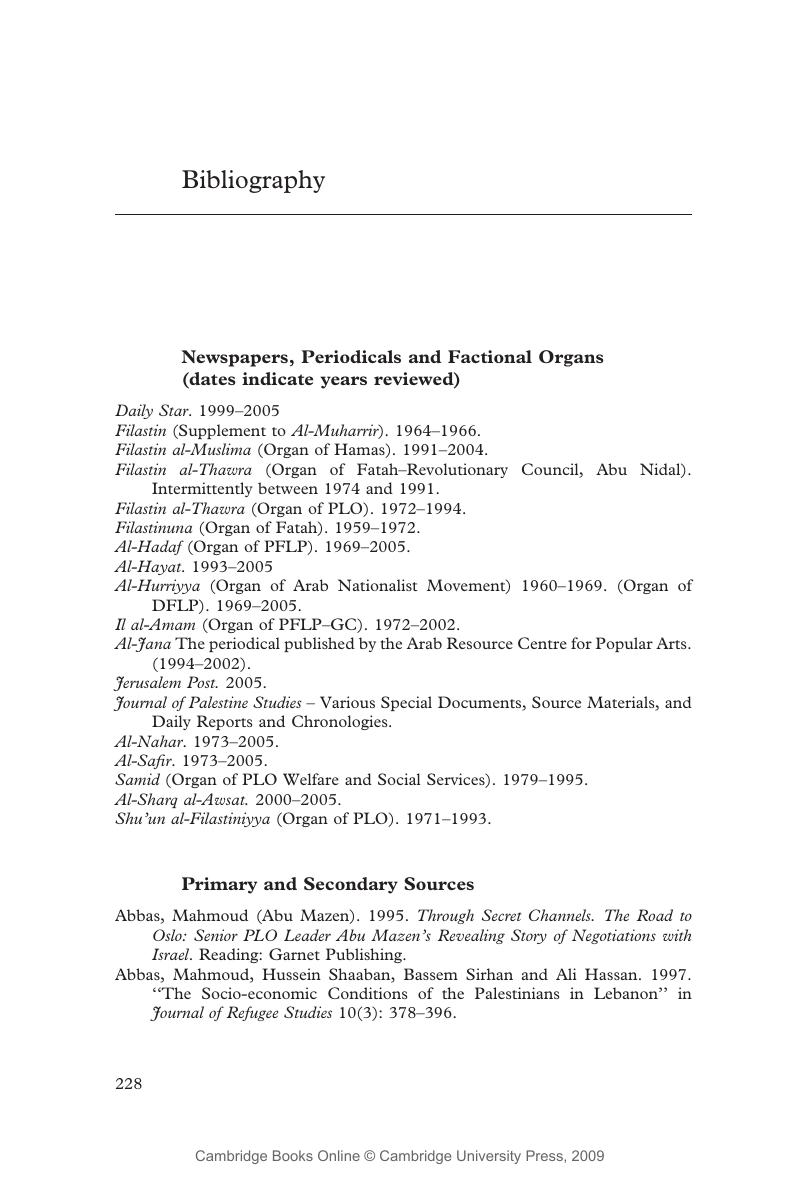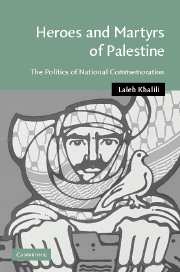Book contents
- Frontmatter
- Contents
- Acknowledgments
- List of abbreviations
- 1 Introduction
- 2 Transnational movements and discourses
- 3 Palestinian lives and local institutions in the camps of Lebanon
- 4 Forms of commemoration
- 5 Contents of commemoration: narratives of heroism, suffering, and sumud
- 6 Guerrillas and martyrs: the evolution of national “heroes”
- 7 Between battles and massacres: commemorating violent events
- 8 Commemoration in the Occupied Palestinian Territories
- 9 Conclusions
- Bibliography
- Index
- Cambridge Middle East Studies 27
- References
Bibliography
Published online by Cambridge University Press: 22 September 2009
- Frontmatter
- Contents
- Acknowledgments
- List of abbreviations
- 1 Introduction
- 2 Transnational movements and discourses
- 3 Palestinian lives and local institutions in the camps of Lebanon
- 4 Forms of commemoration
- 5 Contents of commemoration: narratives of heroism, suffering, and sumud
- 6 Guerrillas and martyrs: the evolution of national “heroes”
- 7 Between battles and massacres: commemorating violent events
- 8 Commemoration in the Occupied Palestinian Territories
- 9 Conclusions
- Bibliography
- Index
- Cambridge Middle East Studies 27
- References
Summary

- Type
- Chapter
- Information
- Heroes and Martyrs of PalestineThe Politics of National Commemoration, pp. 228 - 252Publisher: Cambridge University PressPrint publication year: 2007



